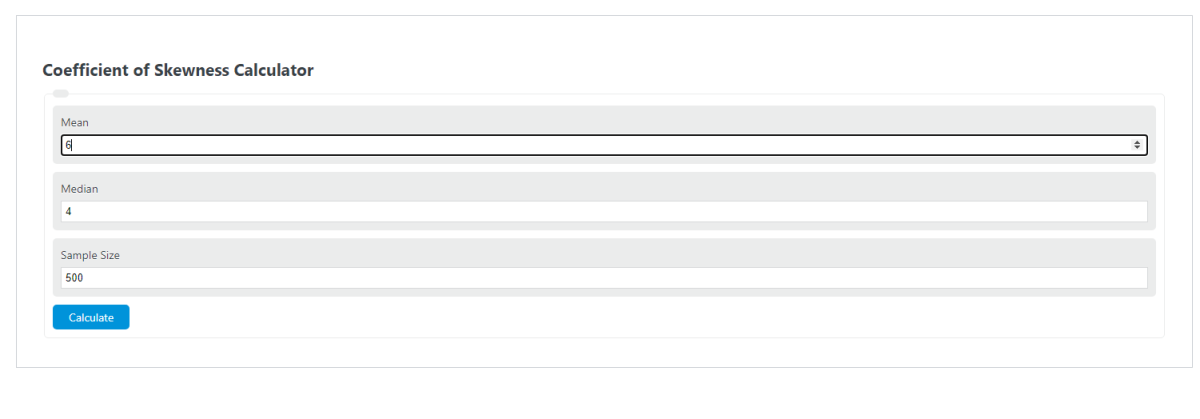Enter the mean, median, and sample size into the calculator to determine the skewness coefficient.
- Coefficient of Variation Calculator
- Statistical Significance Calculator
- T Statistic Calculator (T-Value)
- JB Test Calculator
- ICC (Intraclass Correlation) Calculator
Skewness Coefficient Formula
The following formula is used to calculate the coefficient of skewness of a set of data.
SK = 3 * (M - MD) / s
- Where Sk is the coefficient of skewness
- M is the mean of the data set
- MD is the median of the data set
- s is the sample size of the data set
To calculate the coefficient of skewness, subtract the median of the data set from the mean of the set, multiply the result by 3, then divide by the sample size.
What is the coefficient of skewness?
Definition:
A coefficient of skewness is a method developed to find the relative skewness in a sample using the mean and median.
Skewness itself is a measure of the shape of a data set. In other words, it is a measure of how close the mean and median are to each other relative to the sample size.
How to calculate a coefficient of skewness?
Example Problem:
The following example problem outlines the steps and information needed to calculate a coefficient of skewness.
First, determine the mean of the sample size. For this example, the mean will be 6.
Next, determine the median of the sample size. In this case, the median is measured to be 4.
Next, determine the sample size. The sample size in this example is measured to be 500.
Finally, calculate the coefficient of skewness using the formula above:
SK = 3 * (M – MD) / s
SK = 3 * (6 – 4) / 500
SK = .012
